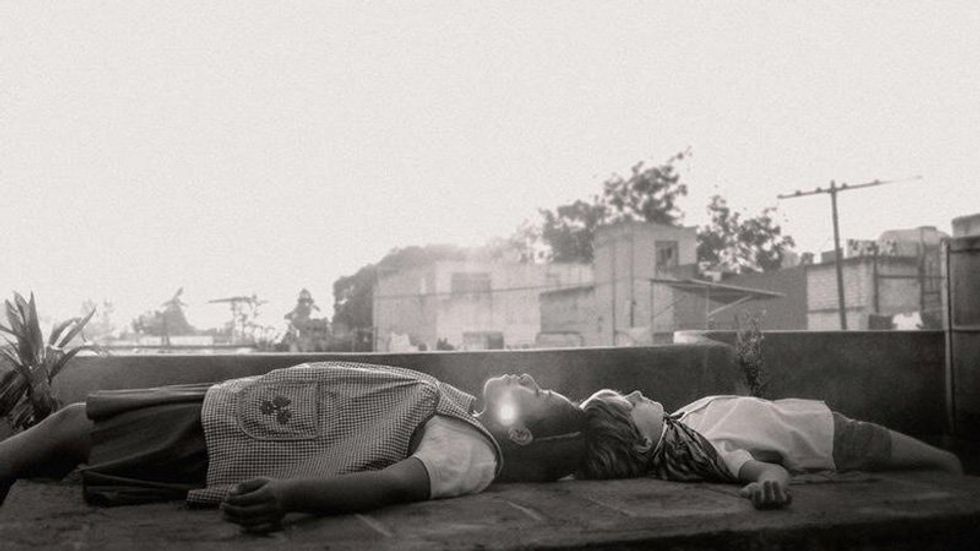A maid sings to herself while she washes clothes on a rooftop that is densely packed with hanging clotheslines, potted plants, and intricate brick architecture. Two kids run around the rooftop playing with toy guns, using the layout to take cover as they pretend to shoot at each other. Across the way are many other rooftops with similar layouts with the occasional unique feature (one has a large kennel with a few barking dogs for example). Each rooftop has a woman, who we can also assume are maids, and is doing similar chores. This is one of many long unbroken shots that Roma has to offer.
Roma is a Netflix foreign film that premiered late November in 2018 (though it has been in some theaters). The film's title refers to the setting of the story, the historical neighborhood Colonia, Roma in Mexico City (specifically in the 1970s). The story mainly follows the housekeeper Cleo (Yalitza Aparicio) through her life working for an upper middle-class family. At its core, the story is very simple and uncomplicated.
Sometimes a simple story is all you need when the visual aspects of the film are the main attraction. The film is presented in complete realism. There is no background music or score to speak of except for natural background noise. Characters in the story look, sound, and act like regular people you might see in everyday day life. Quick editing is kept to a minimum in favor of long shots that often capture very busy locales, sometimes with hundreds of extras in the background. I do not even know if calling them extras is even fair because their acting is so natural and seamless, more so than any typical Hollywood outing.
This film is very Indie in presentation, but that does not mean it lacks narrative weight. Roma plays to its strengths and uses its visuals to tell the deeper story moments. Every shot is filled with things in the environment, some inanimate objects and, to fill in the gaps, other specific character interactions, . Wide-eyed viewers will pick up the subtext right away, but it will take multiple viewings to capture every bit of symbolism, nuance, and reference. The apartment the family lives in, where much of the action takes place, is one of the most memorable settings of the film. It is, essentially, its own character.
Aside from the visual cues there is absolutely no exposition, not even about the era in which the film is set. The only real clue you get, aside from just watching the film, is that it is shot in black and white. A very art house choice, the monochrome color palette invokes the feeling of a period piece, which is exactly what this is. Director Alfonso Cuaron of Children of Men fame has said on multiple occasions that the film is semi-autobiographical of his own childhood experiences. It shows with the amount of care that went into every shot of this film.
I'm not normally into art house films or extreme realism, but I took a chance on Roma, and I really enjoyed myself. It's part indie, nostalgic and visual eye candy all rolled into two hours and fifteen minutes. This film does require patience because Roma take its time, which may be a turn off for some. However, it never falls into the stereotype of being too out there for its own good. At the very least if you want something a little different on your next Netflix night you've got a solid choice in Roma.





 mr and mrs potato head
StableDiffusion
mr and mrs potato head
StableDiffusion





